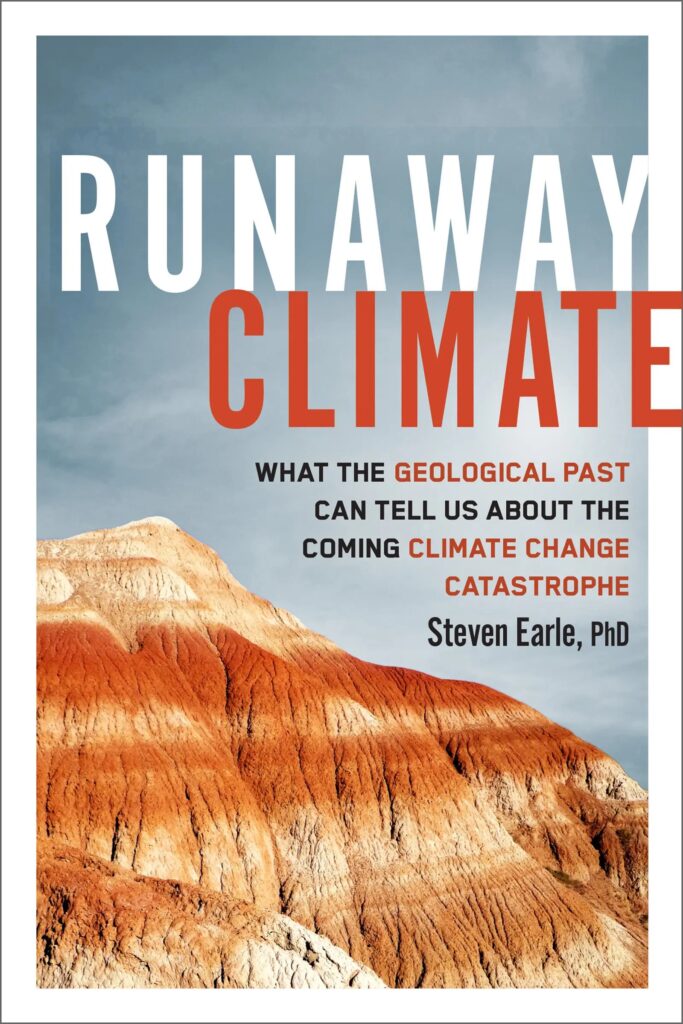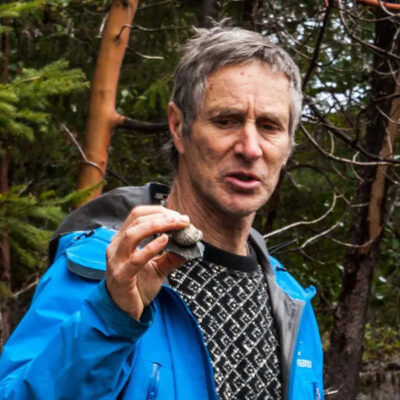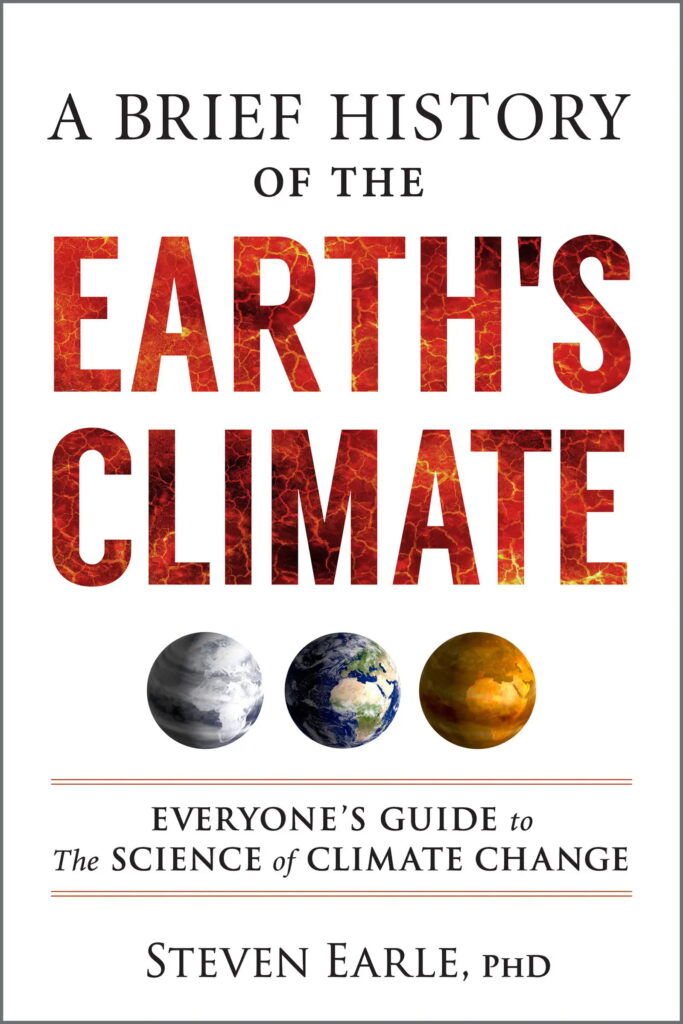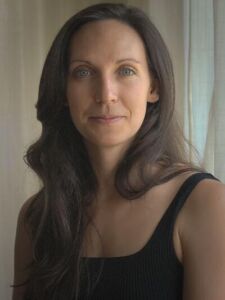‘A tipping point’
Runaway Climate: What the Geological Past Can Tell Us About the Coming Climate Change Catastrophe
by Steven Earle, PhD
Gabriola Island: New Society Publishers, 2024
$24.99 / 9780865719897
Reviewed by Natalie Virginia Lang
*

Fifty-six million years ago, the Earth’s climate dramatically warmed, changing the global ecology forever and drastically impacting life on earth. Soon after, it cooled again. Since then, the planet has been on a warming trend. In some ways this warming and cooling is a natural phenomenon, but today there is one notable wildcard—humanity.
Climate science points to the reality that human civilization is at an existential “turning point.” We have altered the planet to such an extent that we will be impacted, and many of us already are, by increasingly worse climate disasters that are more frequent and more intense year after year. Although the earth has historically gone through warming and cooling cycles, the rate and frequency of our weirding climate is unprecedented and entirely propelled by human activity.
While there are choices and changes that can still be made in our personal lives, as well as in government and corporation policies, that will help with the impact of climate change, “[a]nyone who is not asleep at the wheel can see that the road we’re on is already problematic.” Serious climate change and the disasters, deaths, and displacement that trail along with it, is coming. In many places around the world, it is already here. When we look at the data from the last extreme climate warming (fifty-six million years ago), buried in rocks and oceans, we come to understand that the climate danger can still become much worse. Understanding this science, is a major step to encourage all of humanity to “think carefully about our options, and find a new course.”

Steven Earle (PHD), the award-winning author of A Brief History of Climate Change, has worked as a geologist and developed and taught post-secondary earth sciences and climate change courses for over four decades. In his new book, Runaway Climate: What the Geological Past Can Tell Us About the Coming Climate Change Catastrophe (New Society Publishers, 2024) Earle has written an informative and succinct account of our planet’s history with changing climates, today’s dangerous climate situation, and what must immediately shift, in governments and citizens alike, if we hope for any semblance of a liveable near future.
Runaway Climate is organized into two parts. The first discusses what has happened to Earth’s climate in the past, what the planet looked like at different points in time, how oceans and the land changed, what caused a previous cataclysmic climate shift, and how that climate may be different or similar to our world now.
Part two considers what the past can tell us about how our current land and oceans might change in the coming decades and centuries. Earle also discusses the human implications, asking how humanity may or may not survive, and what everyone (citizen, government, and corporation) can do now, to alter the course we are on.
Although Runaway Climate is scientifically rigorous, filled with key research, data, and charts and figures laying out the facts, Earle’s relatable storytelling style, with a few funny lighthearted moments that feel a bit like your favourite dad jokes, makes this book accessible to a wide audience. Despite this accessibility, Earle is unapologetic about the realities of our current climate crisis, even at one point warning the reader that “if we don’t get our shit together quickly (within a decade) our lives, and especially those of our descendants (including [our] own grandchildren) could get extremely difficult.”
Steven Earle’s arguments around climate change are anchored in an exploration of a geological event “known as the Paleocene Eocene Thermal Maximum (PETM),” which occurred fifty-six million years ago “at the boundary between the Paleocene and Eocene Epochs.” The PETM was a time of rapid global marine and continental warming attributed to massive releases of CO2. Global temperatures rose by six degrees Celsius, causing environmental conditions to quickly and drastically change. The result was mass species extinction and extirpation, changing life on earth forever. The example of this epoch as an anchor for Steven Earle’s thesis sets the reader up for a clear purpose in writing Runaway Climate— to “try to understand what happened, how and why it happened, whether it could happen again, and finally, what we can do to prevent [it].”
The first several chapters explore the geological evidence for the PETM event and its impacts. Earle outlines and explains climate data from the oceans as well as a large body of data collected from The Bighorn Basin in northwestern Wyoming. Which, according to Earle, is an important location because despite the metamorphosed Precambrian rocks (older than 539 million years) there are “a series of sedimentary layers ranging in age from about 500 million to around 50 million years.” These layers hold an incredible number of fossils that can tell us about North America’s geological history, which is crucial to understanding “a short period of runaway climate change”—the PETM, triggered by natural geological processes and lasting for about 180,000 years— with many similarities to what we are experiencing today. The PETM is a time on Earth that “we all might benefit from knowing more about.”

According to the data laid out in Runaway Climate, in a few decades humankind has pumped similar amounts of greenhouse gasses into the atmosphere, as was seen during the PETM, fifty-six million years ago. Massive amounts of greenhouse gases, during the PETM, resulted in intense rises in ocean temperatures, changes in ocean currents, sea-level rise, ocean water anoxia (depletion of oxygen), ocean acidification, marine extinctions, extirpations (uprooting) and forced migrations. These ocean changes both influenced and were impacted by land-based climate disasters like “an enhanced global hydrological cycle (more evaporation and more precipitation) that led to intense storm systems” in some areas, while others were plagued by “significantly increased temperature, relative drought, and substantially higher CO2 levels.” There is also evidence that suggests “stream flows generally declined and also became strongly seasonal and more variable (more flash flooding) and that permanent wetlands became rare or non-existent.” Sound familiar?
If any of this description, drawn from studying the geological evidence of the PETM, seems a lot like our world today, you are on the right track. This is precisely the comparison Steven Earle has attempted to convey in Runaway Climate. The key difference is that although there are some elements of climate change that are unavoidable, and in some ways, we have reached a point of no return, there is still a chance to pivot away from the even more extreme “climate feedback,” which will send us down a rabbit hole, from which there is no return.
Earle explains that “climate feedback is a process through which warming leads to more warming, or cooling leads to more cooling.” Today, “[a]s the ice melts, the surface changes from being highly reflective snow-covered ice to nonreflective open water. Much more solar energy is absorbed by the water than could be absorbed by the snow and ice, and the area warms more, leading to the melting of more ice, and so on.” This means that since much of our planet is still covered in ice (both in land glaciers and floating on the polar seas), as the ice melts faster and faster thanks to human-caused global warming, “that ice [becomes] a climate change bomb.” When it melts there will be a massive release of carbon into the atmosphere, amplifying warming through climate feedback, which will trigger significant climate events catapulting the planet into something similar to the PETM, perhaps worse. Essentially, unless habits are altered and societies reimagine how we live on and manage the earth and the warming that humanity has accelerated, a PETM-like climate change event will occur, and it will be cataclysmic for all life on earth, including all humankind.
With the evidence of the PETM setting the baseline for our understanding of radical climate alteration and its impacts on life on earth, Earle examines how bad things could really get, especially considering “the exceptionally fast climate change that we are causing.”
Earle offers readers the upfront reality of what is to come— food and water insecurity, increasingly uninhabitable areas, flooding or long-term drought, more intense tropical storms, devastation of coastal communities, and forced migration of climate refugees. He shares these very real scenarios without any sugarcoating, explaining that “[i]f a runaway climate starts to take hold toward the end of this century, and the temperature soars to PETM-like levels of 6, 7, and 8°C above the pre-industrial temperature, almost all places where humans now live will become uninhabitable… and almost everyone will be a refugee.”
A worthwhile acknowledgement, according to Earle, is that “[i]ndividuals, governments, and corporations all have a role to play in keeping us out of climate trouble and getting the world to actual net-zero emissions by 2050.” Earle offers readers a pathway toward better choices that will positively impact our lives overall as well as the lives of future generations. Some of these pathways include “flying less, walking and cycling more, using transit… and switching to an EV when we have to drive.” He outlines that we can make our homes more efficient and make significant changes to our diet. Among these changes, Earle notes that one of the most important things we can all do is vote.
When citizens let political candidates and parties know that “we are voting for the climate,” more rigorous climate policies emerge. Policies like ending financial support for fossil fuel industries, making strong and achievable commitments to reach net-zero carbon emissions, end all new fossil fuel developments, put a price on carbon, and “create programs and build infrastructure that will help and encourage individuals to make the changes.”

Tom Green, the Senior Climate Policy Advisor for the David Suzuki Foundation, has described Steven Earle’s Runaway Climate as “[a]n engaging tour through the complex natural processes at play in writing the Earth’s long history of natural climate change to our present climate emergency.”
Overall, though, this book is more than a collection of data and information telling the story of our planet and of an era of climate disaster similar to what we are headed toward. It is a foundation from which campaigners, policy makers, business owners, and citizens of the planet can cultivate a deeper understanding of climate science. An understanding that can lead to leaving fossil fuels behind, embracing clean energy, challenging the status quo, and coming together as global citizens to embrace a cleaner, healthier, and more equitable future.
With the state of the world as it is, and a tipping point in climate change on the horizon, Steven Earle’s Runaway Climate is an unsettling, cautionary, and essential read.
*

Natalie Virginia Lang is a teacher and writer. She is an alumnus of the Graduate Liberal Studies program at SFU and has contributed essays to The British Columbia Review, including the recent “Living with Oil?” as well as “Remnants of Sumas Mountain” and “Letters from the Pandemic: Dear Will.” Lang is the author of Remnants: Reveries of a Mountain Dweller (Caitlin Press, 2023), a memoir inviting readers to re-examine our relationships with the natural world. [Editor’s note: Natalie Virginia Lang has reviewed books by Betsy Warland, Christina Myers, Catherine McGregor and Shailoo Bedi (eds.), Rick Antonson, Dave Doroghy, Sheena Kamal for BCR.]
*
The British Columbia Review
Interim Editors, 2023-25: Trevor Marc Hughes (non-fiction), Brett Josef Grubisic (fiction and poetry)
Publisher: Richard Mackie
Formerly The Ormsby Review, The British Columbia Review is an online book review and journal service for BC writers and readers. The Advisory Board now consists of Jean Barman, Wade Davis, Robin Fisher, Barry Gough, Hugh Johnston, Kathy Mezei, Patricia Roy, and Graeme Wynn. Provincial Government Patron (since September 2018): Creative BC. Honorary Patron: Yosef Wosk. Scholarly Patron: SFU Graduate Liberal Studies. The British Columbia Review was founded in 2016 by Richard Mackie and Alan Twigg.
“Only connect.” – E.M. Forster






























